John Reardon previously worked at Patek Philippe for a decade. But that is not what he is known for today; this walking encyclopedia of all that is Patek Philippe’s true love is the auction business, where he combines his historical knowledge and his love of horology – and in particular that of this brand.
Former international head of watches at Christie’s, he recently founded his own business called Collectability LLC in order to focus on the buying and selling solely of vintage Patek Philippe watches. In parallel, he continues to work as senior international consultant to Christie’s.
Reardon’s past credits include owning a small clock restoration business during his college years, after which he worked for other auction houses. He has also written other books and maintains columns in a variety of publications, including Patek Philippe’s in-house magazine.
He published Patek Philippe In America: Marketing The World’s Foremost Watch in 2008.
Patek Philippe In America: Marketing The World’s Foremost Watch: structure
This richly illustrated coffee table book weighing close to two kilograms is divided into eight chapters excluding the introduction and end matter, which handily includes a chronology, a bibliography, and an index, making this book both an invaluable reference tool as well as being a fascinating read.
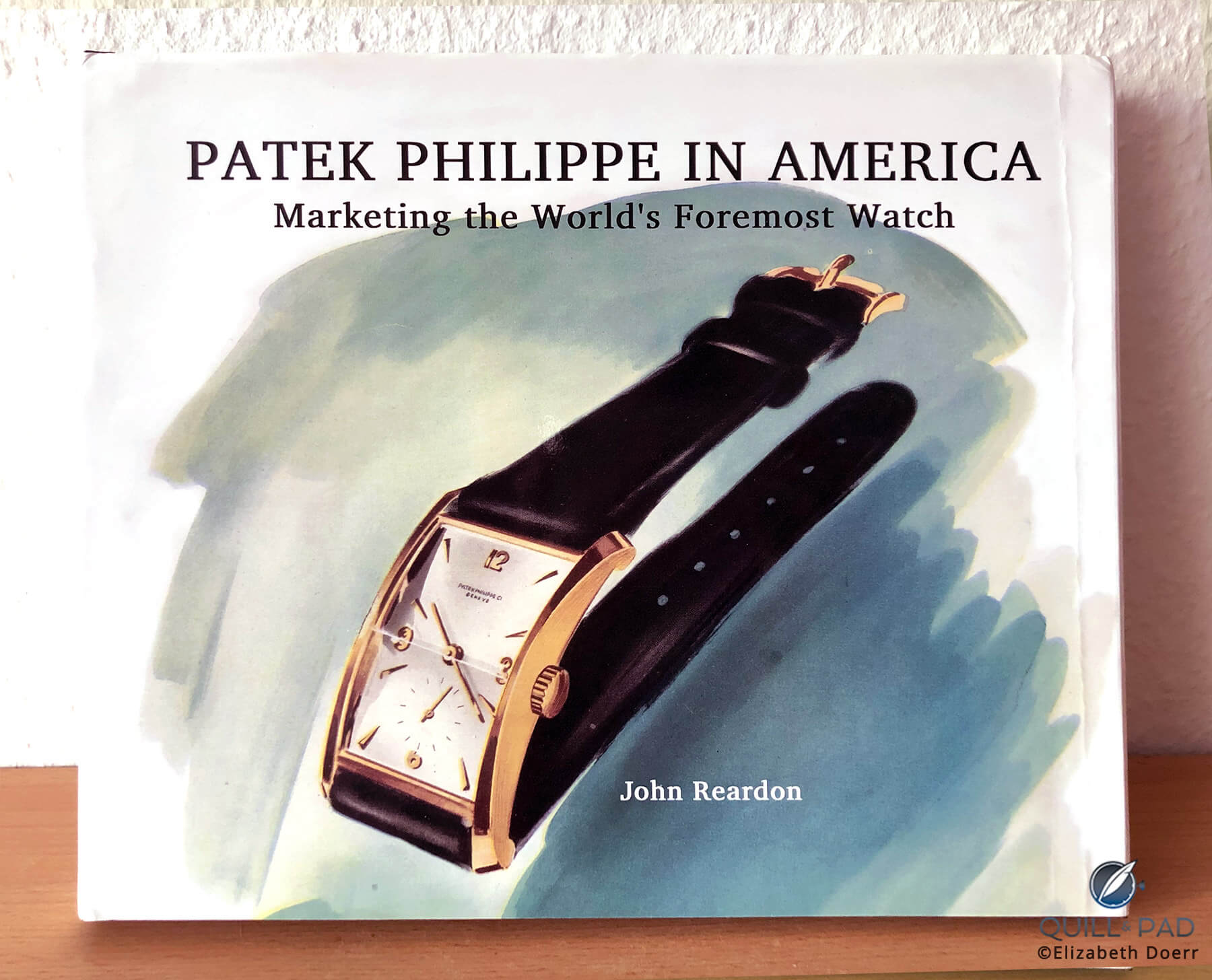
‘Patek Philippe In America: Marketing The World’s Foremost Watch’ by John Reardon
The chapters are divided into eras starting with the nineteenth century and heading on up to the 1980s (chapter 8), when Reardon declares the brand having arrived with global success.
The chapters do not scrimp in detailed information, expert opinion, and rich historical illustrations: even the book’s structure points are a pure joy to read or simply thumb through.
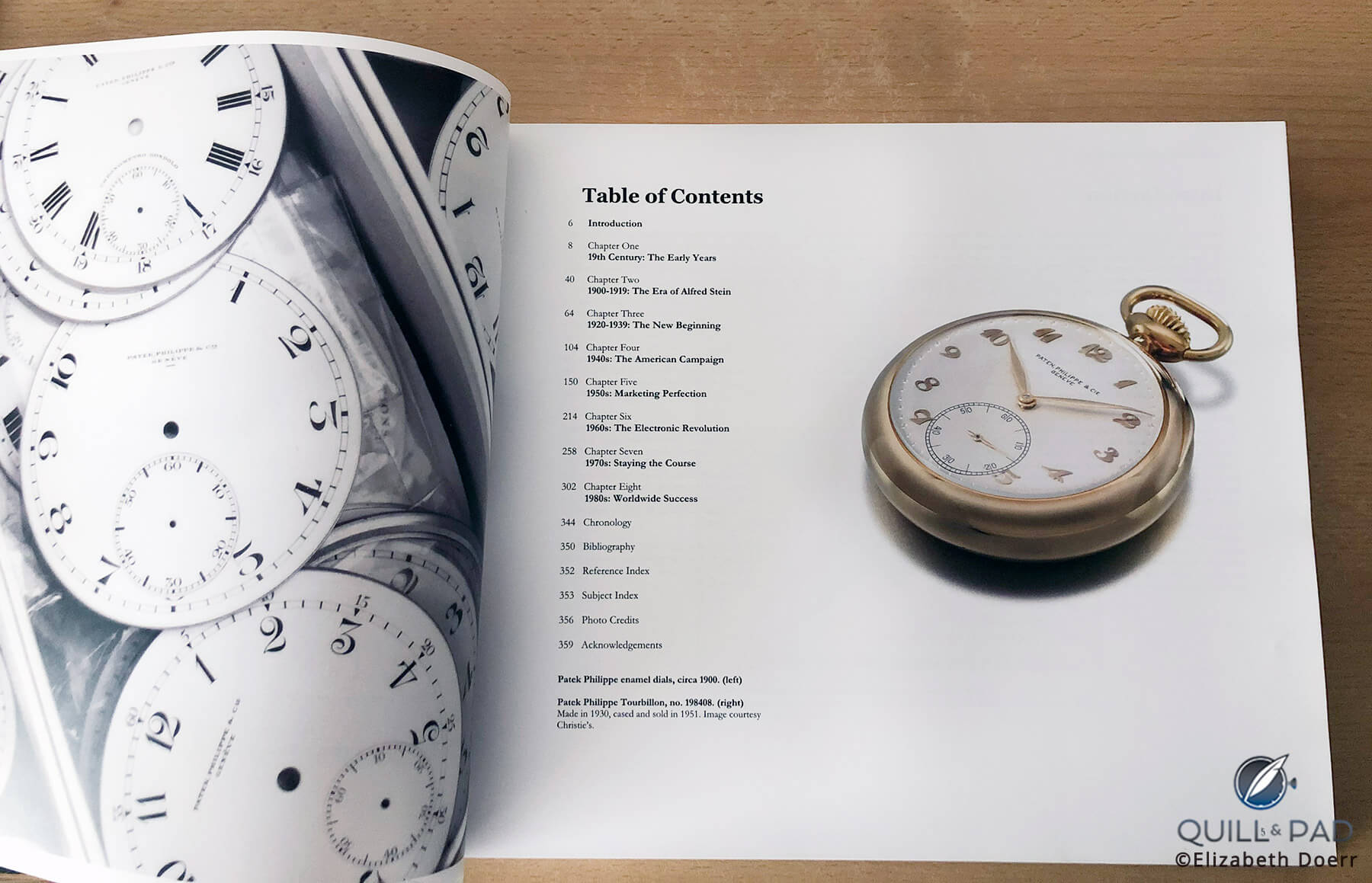
‘Patek Philippe In America: Marketing The World’s Foremost Watch’ by John Reardon
Each chapter ends with notes and a selection of the decade’s advertisements.
Patek Philippe In America: Marketing The World’s Foremost Watch: content
As the title of this book suggests, it details the history of this Genevan brand in the United States right from Tiffany’s first order in 1847.
The details Reardon administers are magnificent, and the multitude of reproduced vintage advertisements are not only interesting, they provide an overview of how the brand was marketed in the United States from its formative years there until the 1980s.
Chapter 1 begins with the founding of the house, but by the third page of the chapter it quickly heads straight into the target market.
“. . . With the Swiss watch industry severely challenged, Patek had to ensure his company’s survival by taking advantage of the demand in America . . . One leading retailer was an American company – Tiffany, Young, & Ellis – who sold Patek timepieces as early as 1847 . . .” (p. 10).
And so the journey across the pond began.
Chapter 2 continues with the era of the first American distribution under watchmaker Alfred G. Stein (1900-1919), while Chapter 3 (1920-1939) continues with the breakdown of communication and subsequently the market before coming under the new ownership of the Stern family in 1932.
Chapter 4 – the 1940s – is primarily about building the American market back up as World War II was the focus of most of the world. According to Reardon, America was “. . . one of the only remaining markets with the means to buy them [fine watches].”
Henri Stern had arrived in New York in 1937 to reorganize the distribution, quickly founding the Henri Stern Watch Agency, which remains the U.S. distribution company for Patek Philippe to this very day. Upon his return to Geneva in 1957, Stern (present CEO Thierry Stern’s grandfather) became the global president of the company, remaining so for more than 20 years.
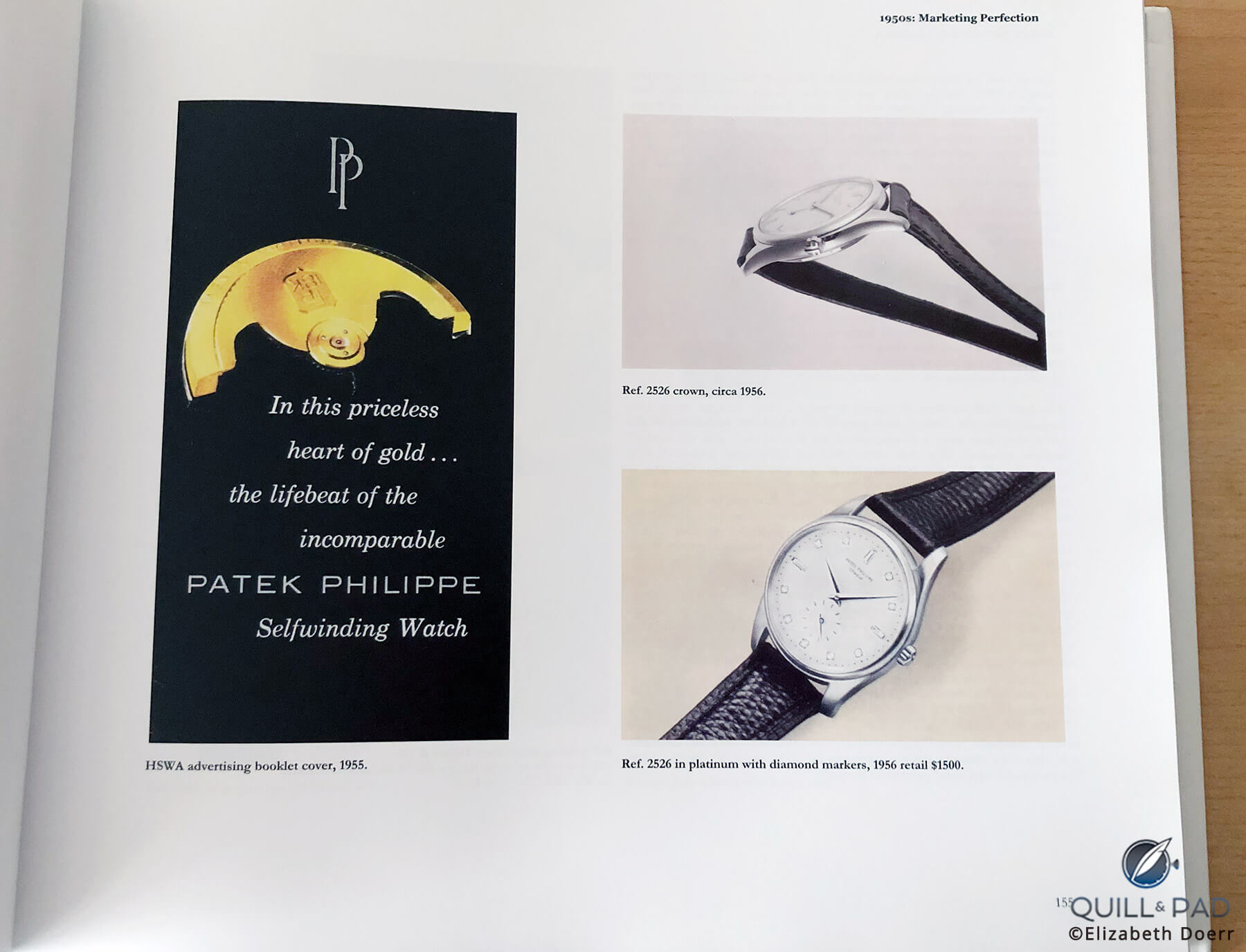
‘Patek Philippe In America: Marketing The World’s Foremost Watch’ by John Reardon, page 155
Chapter 5 coincides with the 1950s, an era Reardon describes as “marketing perfection.” It was also the decade in which the first automatic Patek Philippe watches arrived, while chapter 6 – the 1960s – is all about electronic timekeeping.
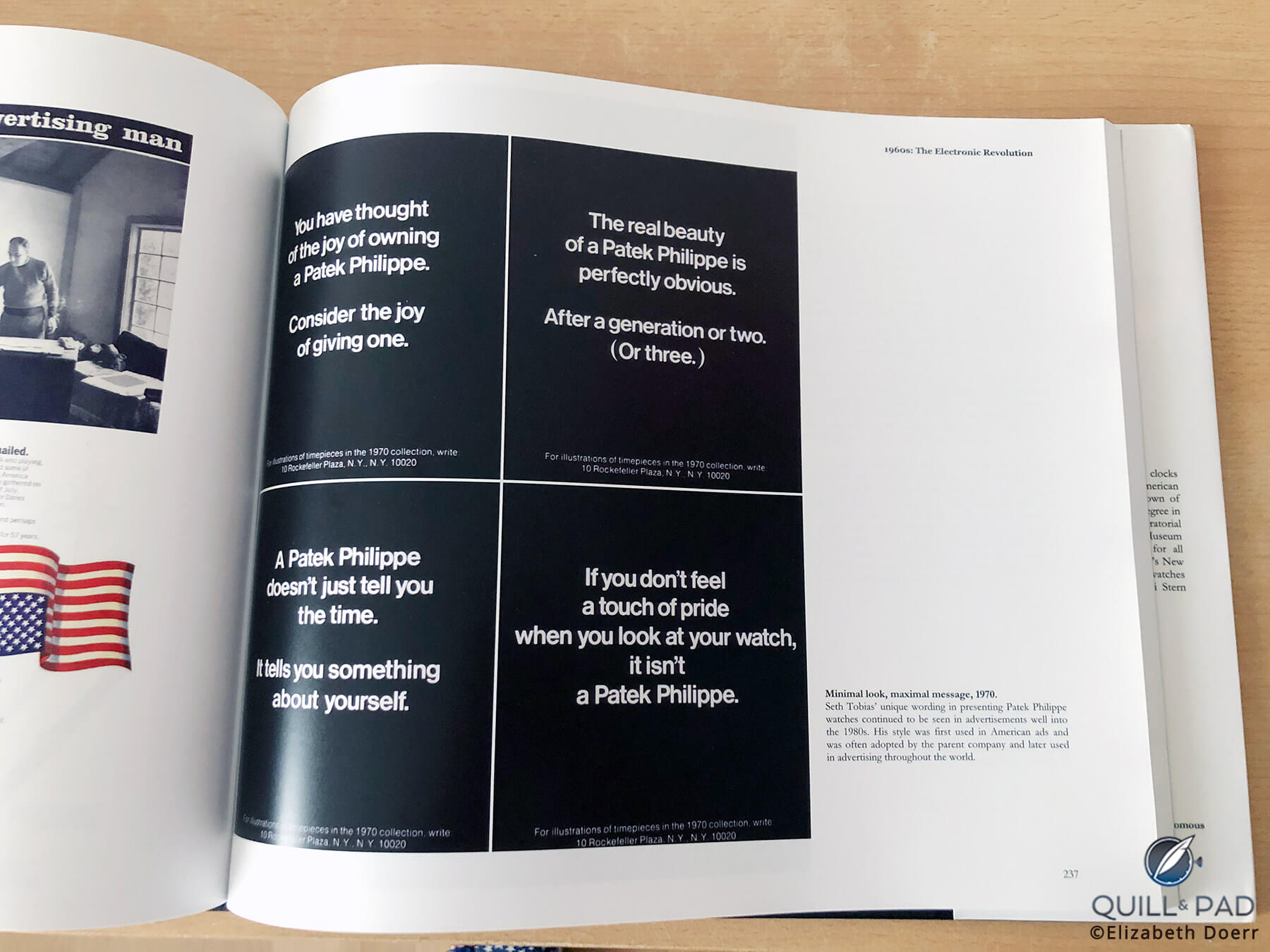
‘Patek Philippe In America: Marketing The World’s Foremost Watch’ by John Reardon, page 237
The 1970s is vividly described in chapter 7, much of which can be distilled to one sentence on page 258: “Suddenly, it became clear to Patek Philippe that the quartz and electronic technology it had helped develop was a threat to its own existence.”
And with that the Quartz Crisis was ushered in. As Reardon points out, the brand did not give in to the newfangled technology as many of its counterparts did, deciding in the end to look to its own history for inspiration and staying on its independent course.
The final chapter – chapter 8, describing the 1980s – spotlights Caliber 89 celebrating the brand’s 150th anniversary, the brand’s quartz calibers (yes, the brand did make some), and of course the Nautilus.
Patek Philippe In America: Marketing The World’s Foremost Watch: quality
Patek Philippe In America is an authentic coffee table book with all the bells and whistles: fantastic (vintage) photography, expert writing, and capable copyediting that should already be obvious in its asking price. I cannot sing this books’s praises enough.
It will certainly appeal to both the historians in all of us watch nerds and those interested in seeing how marketing of watches has evolved over the last century. If you liked “Mad Men” and you love watches, you will be a big fan of this book for sure.
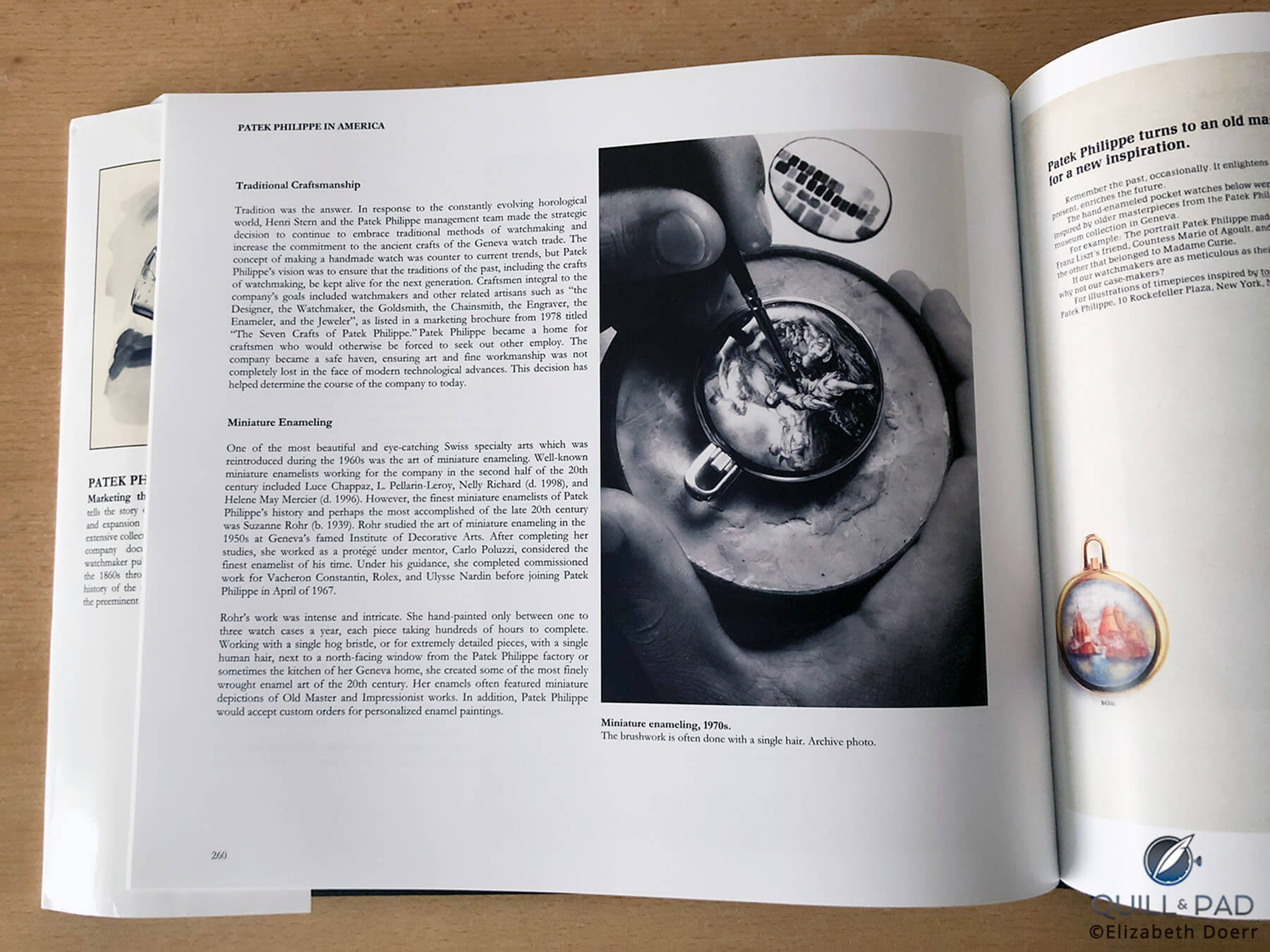
‘Patek Philippe In America: Marketing The World’s Foremost Watch’ by John Reardon, page 260
Patek Philippe In America: Marketing The World’s Foremost Watch’s viewpoints from noted expert Reardon are invaluable, and the diverse array of historical advertising plates make this book a true gem among horological tomes. I would recommend it heartily for anyone with even a passing interest in the subject.
You can purchase this book on Hodinkee or amazon.
Quick Facts Patek Philippe In America: Marketing The World’s Foremost Watch
Publisher: Cefari Publishing
ISBN: 978-0982037928
Pages: 360 pages
Photographs: more than 500
Binding: hardcover
Language: English
Price: approx. $400
Leave a Reply
Want to join the discussion?Feel free to contribute!





















































Not since Huber and Banbery has there been a sequel in content and
thoughtful inclusion regarding the holy grail of traditional Swiss watch
making. Now there is with John Reardon’s book “Patek Philippe in America”.
This documentation of the marketing and presence of Patek Philippe in
America is a wonderfully binding read. Reardon’s un-bridled access to
Patek’s copious records has produced a reference of timeless and endless
fascination. This work of exquisite documentation is a must if you love
Patek Philippe. It is a delight from beginning to end.